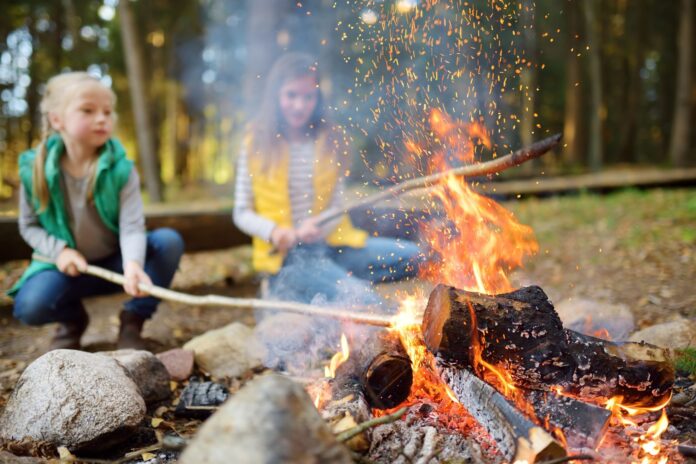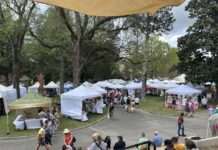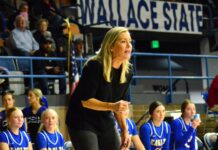AUBURN UNIVERSITY, Ala. – Fall is a popular season for bonfires, campfires and prescribed burning in Alabama. To spread the word on practicing fire safety, an Alabama Cooperative Extension System regional agent informs everyone about responsibly enjoying autumn’s beautiful weather.
Ryan Mitchell said thoughtful planning and careful execution are key to safe burning.
The fire triangle
Fire needs three components to thrive: oxygen, fuel and heat. This trio is referred to as the fire triangle. Without the existence of all three elements, fire will not thrive. Removing only one of these items will cause any flame to slowly burn out or disappear completely.
The term fuel refers to any material—living or not—that fire can use to spread. This can include anything from light, flashy fuels such as grasses or shrubs, to larger materials like stumps and piled storm debris that take longer to extinguish. Of course, in dry conditions, the ignition rate for these fuels is exacerbated by the lack of moisture in the air and the material itself.
Prescribed burning
When driving through Alabama in the fall and winter months, large clouds of smoke rising into the blue sky may be alarming. However, these clouds are likely prescribed burns – the intentional burning of forest or agricultural land.
The use of prescribed fire has proven to be a very beneficial tool in agriculture and forest management. In crop fields it removes debris prior to the next planting, controls weeds and reduces pests/diseases. In forestry, running a low-intensity fire through a forest floor reduces hazardous fuel loads, decreases natural competition for timber, allows sunlight to reach the forest floor, improves wildlife habitat and nourishes the soil.
Before intentionally setting a fire, experienced practitioners conduct hours of planning to create a prescription of conditions needed to meet specific objectives. Prescribed fire is a safe way to apply a natural process, ensuring ecosystem health and reducing future wildfire risk.
“If you choose to conduct a prescribed burn, safety is of the utmost importance,” Mitchell said. “Under the wrong conditions, fire can easily get out of hand and affect property and life.”
Mitchell said everyone should contact the Alabama Forestry Commission for a free burn permit before initiating a burn more than one-quarter of an acre in size. Also, check the agency’s website for any potential burn restrictions in the area.
There is also a training course for those who aspire to become a certified prescribed burn manager. The Certified Prescribed Burn Manager course covers 32 hours of discussion, planning and study of Alabama fire laws. Any individual who is interested in the use of prescribed fire as a management tool is encouraged to participate in the program.
Bonfires, campfires and burn piles
Most Alabamians enjoy sitting around a good campfire or bonfire. These events are a popular way to bring people together during this time of the year. However, they can become dangerous if not executed responsibly.
Before grabbing those marshmallows, ensure the proper handling of fire – especially when starting it. Remove all flammable materials around a fire site including loose debris, brush, fuel cans, etc. before lighting a flame. This will mitigate the opportunity for fire to spread to undesirable places, such as vehicles or structures.
“Never walk on top of a large pile to ignite it,” Mitchell said. “This action can potentially lead to falling or becoming stuck while fuel is rapidly burning.”
Mitchell adds that it is not a good idea to use gasoline or other accelerants that may give off explosive vapors. Using this method has the potential to cause severe injuries.
Feeling the burn
Now that fall has come to stay, continue to practice responsibility when managing property or huddling around the fire.
For more information on burning techniques and safety tips, visit the Alabama Extension website, www.aces.edu.




















